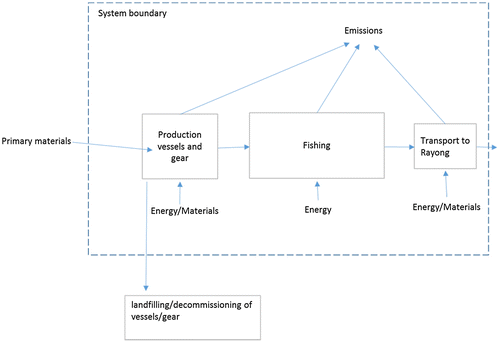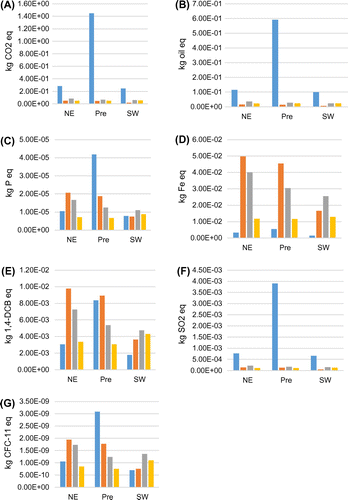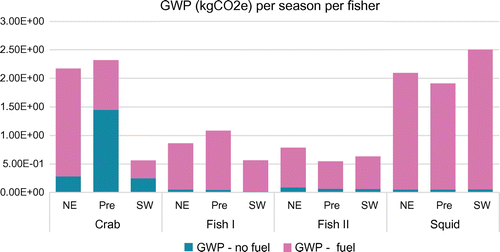Figures & data
Figure 1. System boundary of the considered Thai fisheries.

Figure 2. Location of Muang Rayong District (red) within Rayong province (green) in Thailand (grey).

Table 1. Life cycle inventories based on ecoinvent 3.2 for three fishing techniques from four different fishers from Thailand per FU (1 kg of landed catch)
Table 2. Total catch and catch of target species per season for the different techniques
Figure 3. Results for four different techniques (blue: crab gill-net, orange: fish trap (I), grey: fish trap (II), yellow: floating squid trap) and different impact categories: (A) global warming potential, (B) fossil depletion potential, (C) freshwater eutrophication potential, (D) metal depletion potential, (E) human toxicity potential, (F) terrestrial acidification potential, G) ozone layer depletion potential.

Table 3. Total impacts at midpoint level for selected impact categories (see main text) per functional unit, averaged over the year
Table 4. Relative contribution per season of the direct fuel emissions in relation to the total climate change impacts from the four artisinal fisher
Figure 4. Visual representation of the predominance of direct fuel use emissions in regards to global warming potential (GWP) per season per fisher.

